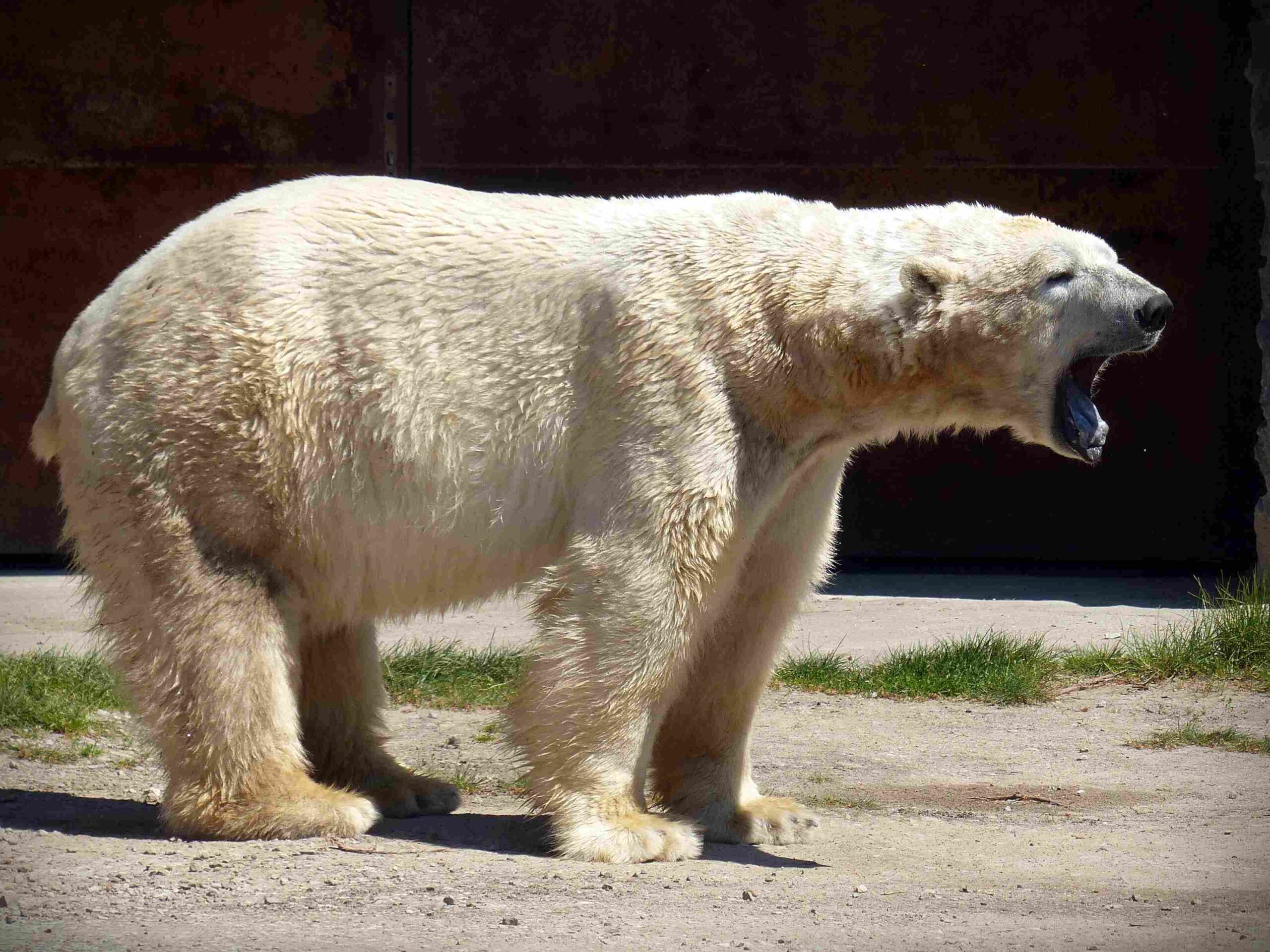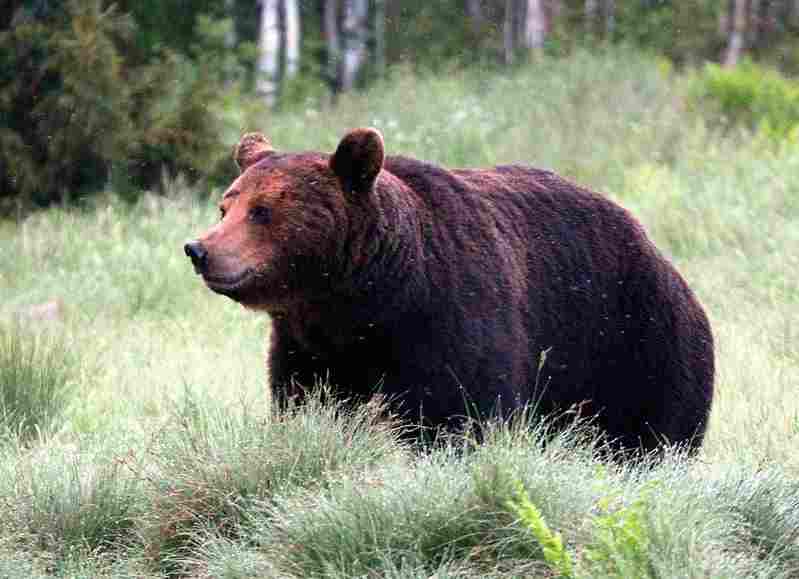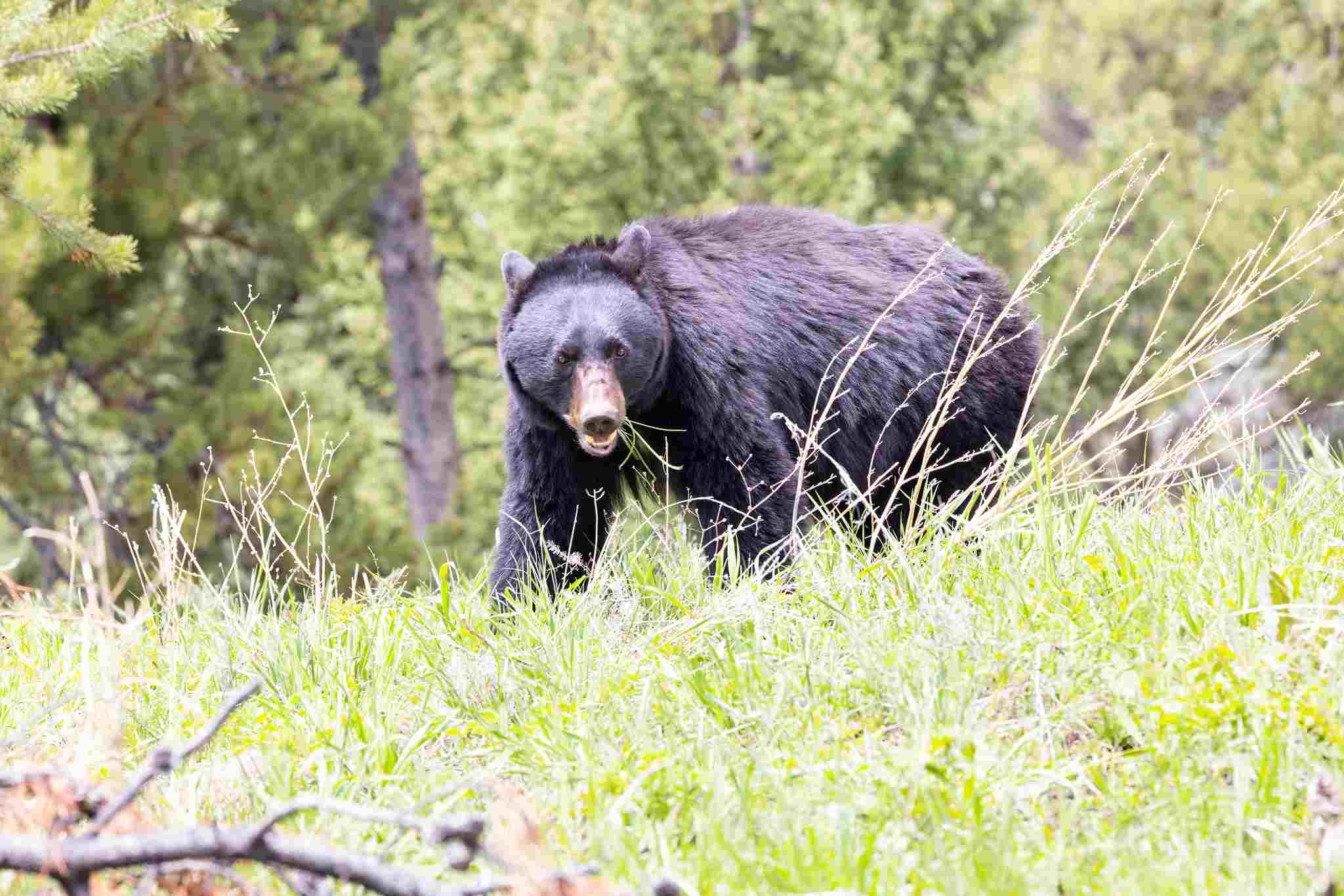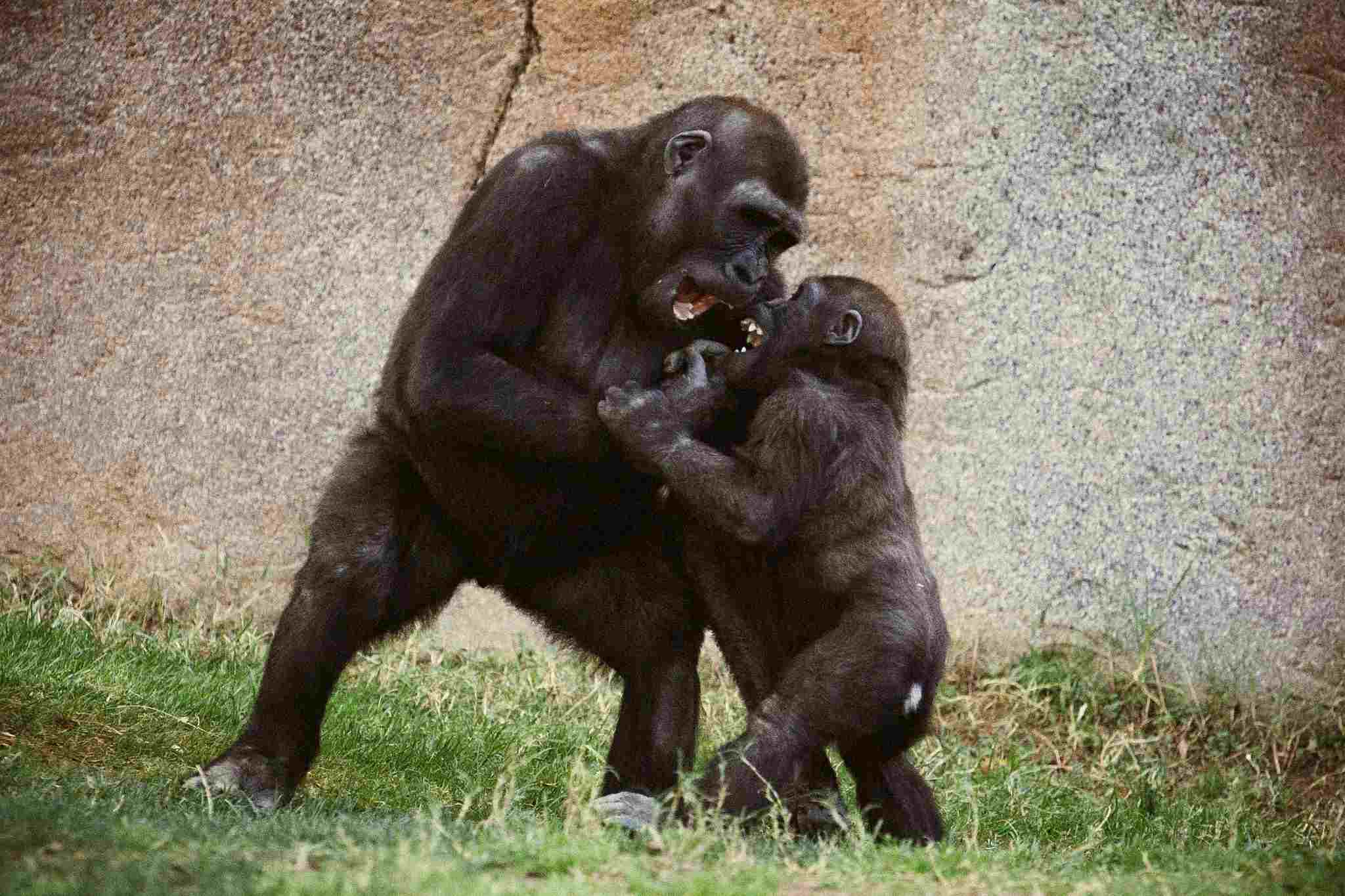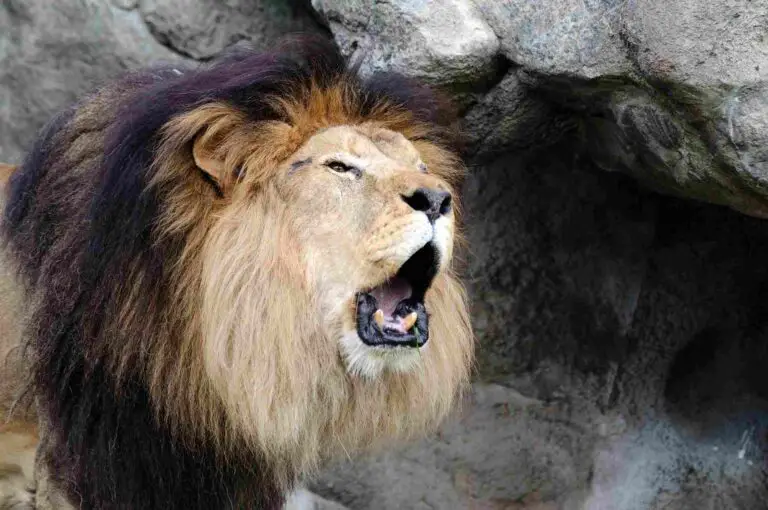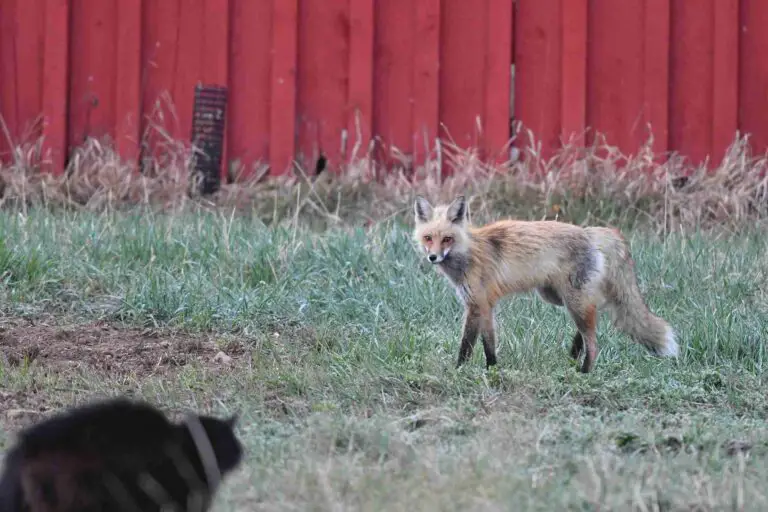Elephant Vs Polar Bear Size, Weight, Ecological Comparison
The size and weight of an elephant compared to a polar bear are significant factors in determining their strength and capabilities. Elephants are larger, heavier, and stronger than polar bears, which gives them an advantage in a potential confrontation.
In this article, we will explore various aspects of these animals and compare them to understand their biological differences and physical capacities. By examining their taxonomy, appearance, size, weight, speed, agility, bite force, and overall physical capacity, we can determine which animal is stronger.
Key Outcomes
*Biological Comparison
The elephant and polar bear are not biologically related in terms of genus and species. They belong to different taxonomic families, with elephants belonging to the family Elephantidae and polar bears belonging to the family Ursidae. Despite this, a biological comparison between the two animals can still be made.
*Size and Weight Comparison
The size and weight comparison between elephants and polar bears is an interesting aspect to explore. When it comes to size, elephants are undoubtedly larger than polar bears. Elephants are known for their massive size, with adult males reaching heights of up to 13 feet at the shoulder and weighing around 12,000 pounds. In comparison, polar bears are much smaller, with adult males averaging around 10 feet in length and weighing between 900 to 1,600 pounds.
In terms of weight, elephants again take the lead. Adult elephants can weigh anywhere from 5,000 to 14,000 pounds, depending on the species. On the other hand, polar bears have an average weight ranging from 900 to 1,600 pounds. It’s clear that elephants outweigh polar bears significantly.
Elephants surpass polar bears in both size and weight.
*Physical Capability Comparison
Elephants are generally much stronger than polar bears.
When comparing the physical capabilities of elephants and polar bears, it is important to consider their strength, agility, and other factors that contribute to their survival and dominance in their environments.
Both animals possess unique strengths and adaptations that make them formidable. Elephants are known for their immense strength, which allows them to uproot trees and defend themselves against predators. On the other hand, polar bears are highly agile swimmers and skilled hunters, relying on their speed and stealth to catch prey.
1). Taxonomy
Elephants and polar bears belong to different taxonomic families and genera. Elephants are classified under the family Elephantidae and the genus Elephas or Loxodonta, depending on the species. On the other hand, polar bears are classified under the family Ursidae and the genus Ursus.
The taxonomic classification of these animals highlights their distinct evolutionary lineages and genetic differences. Elephants are more closely related to other large mammals like mammoths and mastodons, while polar bears are more closely related to other bear species.
Generally, the taxonomy of elephants and polar bears provides insight into their evolutionary history and genetic relationships.
2). Appearance
In terms of coat, elephants have tough, wrinkled skin that is sparsely covered in short, coarse hair. Their skin is grayish in color, which helps them blend in with their surroundings in the wild. On the other hand, polar bears have a thick layer of white fur that provides insulation in their icy habitat. This white fur acts as camouflage, allowing them to blend in with the snow and ice.
In terms of stature and build, elephants are known for their large size and robust build. They have a massive body with a long trunk, large ears, and tusks (in some species). In contrast, polar bears have a more streamlined body with a thick layer of blubber to keep them warm in the Arctic. They have a stocky build, a long neck, and powerful forelimbs for swimming and hunting.
Comparing the appearance of these animals, it is clear that elephants and polar bears have distinct physical characteristics that are well-suited to their respective habitats. Elephants have a rugged, grayish appearance, while polar bears have a sleek, white appearance.
3). Size
When comparing the size of elephants and polar bears, it is important to consider their total body length and height at the shoulders. Elephants are known for their impressive size, with the African elephant being the largest land animal on Earth. They can reach lengths of up to 10 to 13 feet and stand at a shoulder height of around 8 to 13 feet. On the other hand, polar bears are smaller in size compared to elephants. They typically measure around 7 to 8 feet in length and stand at a shoulder height of about 4 to 5 feet.
The size difference between these two animals is significant, with elephants towering over polar bears in terms of both length and height. This size advantage is a result of the different habitats they inhabit and the ecological roles they play. Elephants require a larger size to navigate through dense vegetation and to intimidate potential predators, while polar bears have adapted to their Arctic environment with a more compact size that allows them to swim and hunt efficiently.
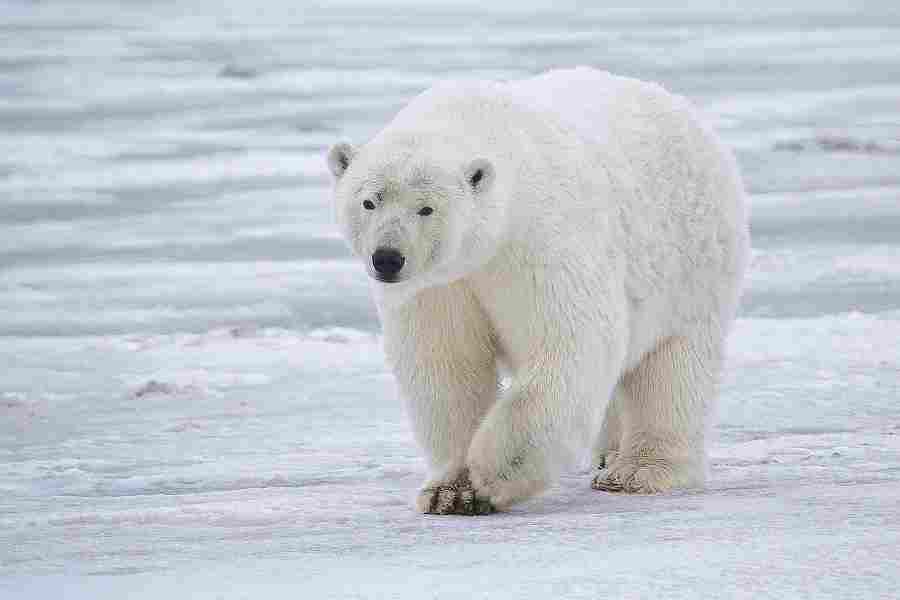
4). Weight
When comparing the weight of elephants and polar bears, it is evident that elephants outweigh polar bears significantly. Elephants are known for their massive size and weight, with the African elephant being the heaviest land animal on Earth. They can weigh anywhere between 5,000 to 14,000 kilograms (11,000 to 31,000 pounds), depending on the species. In contrast, polar bears are relatively lighter. Adult male polar bears typically weigh around 900 to 1,600 kilograms (2,000 to 3,500 pounds), while adult females weigh approximately 300 to 600 kilograms (660 to 1,300 pounds).
The weight difference between these two animals is substantial, with elephants outweighing polar bears by several times. This weight advantage is crucial for elephants as it provides them with stability and strength to navigate their habitats and defend themselves against potential threats. On the other hand, polar bears have adapted to their Arctic environment, where their lighter weight allows them to swim and move efficiently on ice.
5). Speed and Agility
When comparing the speed and agility of elephants and polar bears, it is clear that these two animals have distinct abilities in this aspect. Elephants, despite their massive size, are surprisingly agile for their weight. They can reach speeds of up to 25 miles per hour (40 kilometers per hour) when running, and their long legs and flexible trunks allow them to navigate through various terrains with relative ease. However, due to their size, elephants may not be as quick and nimble as some other animals.
On the other hand, polar bears are known for their remarkable speed and agility, especially in their Arctic habitat. They are excellent swimmers and can reach speeds of up to 6 miles per hour (10 kilometers per hour) in water. On land, polar bears can run at speeds of around 25 miles per hour (40 kilometers per hour) for short distances. Their streamlined bodies and powerful limbs enable them to move swiftly across the ice and snow.
While elephants demonstrate surprising agility for their size, polar bears are more specialized in terms of speed and agility, particularly in their Arctic environment. These adaptations allow them to hunt efficiently and navigate their icy surroundings with precision.
6). Bite Force
When comparing the bite force of elephants and polar bears, it is important to consider the unique adaptations and purposes of their jaws. Elephants have incredibly strong jaws that are designed for grasping and tearing vegetation. However, their bite force is not as powerful as some other animals due to their specialized diet.
On the other hand, polar bears have a formidable bite force that is essential for their survival in the Arctic. Their jaws are adapted for capturing and killing their prey, which includes seals and other marine mammals. With their sharp teeth and strong muscles, polar bears can exert a significant amount of pressure with their bite.
While it is difficult to directly compare the bite force of these two animals, it is clear that polar bears have a stronger bite force due to their carnivorous diet and the need to capture and kill their prey. Elephants, on the other hand, have a bite force that is suited for their herbivorous diet and the need to consume large amounts of vegetation.
7). Overall Physical Capacity (Which is Stronger?)
When comparing the overall physical capacity of elephants and polar bears, it is important to consider various factors that we have evaluated and compared. While both animals possess impressive strength and capabilities, there are key differences that determine which is stronger in the case of a violent confrontation.
In terms of sheer size and weight, elephants have the advantage. They are the largest land animals, with males weighing up to 12,000 pounds and standing over 10 feet tall at the shoulder. Their massive bodies and powerful muscles give them a significant advantage in terms of physical strength.
On the other hand, polar bears are formidable predators with incredible agility and speed. They are well-adapted to their Arctic habitat, with a streamlined body and strong limbs that allow them to swim and move efficiently on land. Their muscular build and sharp claws make them formidable hunters.
However, when considering the overall physical capacity, the elephant’s size and strength give it the upper hand. In a violent confrontation, the sheer force and power of an elephant would likely overpower a polar bear. The elephant’s ability to trample and use its trunk as a weapon, combined with its immense size, would make it a formidable opponent.
8). Habitat
Elephants are found in a variety of ecosystems, including savannas, forests, and grasslands. They have a wide geographic range, inhabiting parts of Africa and Asia. These intelligent creatures have adapted to different environments, utilizing their long trunks to reach water sources and their strong tusks to dig for food. Elephants are highly social animals, often forming close-knit family groups and migrating in search of food and water.
In contrast, polar bears are specialized for life in the Arctic. They are primarily found in the Arctic Circle, including regions such as Alaska, Canada, Greenland, and Russia. These bears rely on sea ice for hunting seals, their primary food source. As the ice melts due to climate change, polar bears face significant challenges in finding food and maintaining their populations. They are solitary animals, except during mating season and when mothers are raising their cubs.
While elephants and polar bears have different habitats, both are facing threats due to human activities and environmental changes. Loss of habitat, poaching, and climate change are major concerns for their survival.
9). Lifespan
When comparing the lifespan of elephants and polar bears, it is important to consider the differences in their biology and ecological factors. Elephants have a relatively long lifespan, with an average life expectancy of around 60 to 70 years in the wild. Some elephants have been known to live up to 80 years or more. This extended lifespan can be attributed to their large size, slow rate of reproduction, and the absence of natural predators in their habitats.
On the other hand, polar bears have a shorter lifespan compared to elephants. In the wild, polar bears typically live for about 20 to 30 years. This shorter lifespan can be attributed to various factors, including the harsh Arctic environment, limited food availability, and the challenges they face due to climate change. The melting of sea ice, which is essential for their hunting and breeding, poses a significant threat to their survival and can impact their overall lifespan.
It is worth noting that these lifespan estimates can vary depending on various factors such as habitat conditions, availability of resources, and individual health. However, the general trend is that elephants have a longer lifespan compared to polar bears.
10). Behavior
In terms of feeding, elephants are herbivores and have a diverse diet consisting of grasses, leaves, bark, and fruits. They are known to spend a significant amount of time feeding, consuming large quantities of food to sustain their massive size. On the other hand, polar bears are carnivores and primarily feed on seals. They rely on hunting skills and patience to catch their prey, often waiting for hours near seal breathing holes in the ice.
Aggression is another aspect of behavior that differs between the two animals. While elephants are generally peaceful and social creatures, they can become aggressive when provoked or when protecting their young. They display dominance through physical displays such as trumpeting, head shaking, and mock charges. In contrast, polar bears are solitary animals and are more likely to exhibit aggression when competing for food or during mating season.
Vocalization is an important means of communication for both elephants and polar bears. Elephants use a variety of vocalizations, including trumpeting, rumbling, and roaring, to communicate with each other over long distances. Polar bears, on the other hand, are relatively silent animals and mainly communicate through body language and scent marking.
Social behavior also differs between the two species. Elephants live in complex social structures, with strong family bonds and a matriarchal hierarchy. They exhibit cooperative behaviors such as caring for injured or sick members of the group. In contrast, polar bears are solitary animals and typically only come together during the mating season.
When it comes to parenting, elephants have a strong maternal instinct and females play a crucial role in raising and protecting their young. They form tight-knit family groups where the responsibility of caring for calves is shared among the females. Polar bears, on the other hand, are solitary animals and females raise their cubs alone, providing them with the necessary skills for survival in the harsh Arctic environment.
The behavior of elephants and polar bears differs significantly due to their distinct ecological adaptations and social structures.
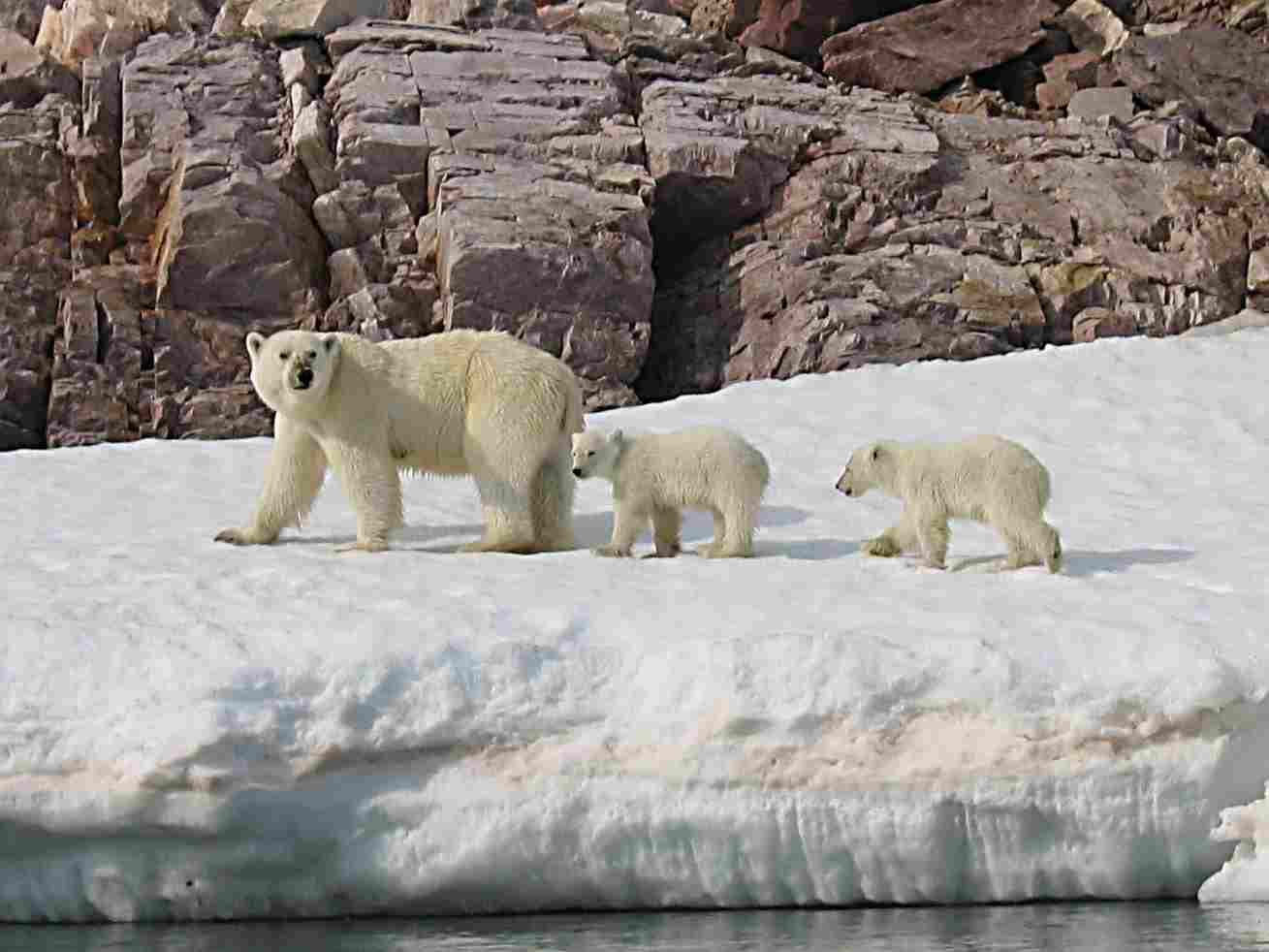
11). Reproduction
Elephants and polar bears have distinct reproductive strategies. Elephants are viviparous, meaning they give birth to live young. The gestation period for elephants is the longest among land mammals, lasting approximately 22 months. Female elephants typically give birth to a single calf, which is cared for by the entire herd.
On the other hand, polar bears are also viviparous, giving birth to live cubs. However, their gestation period is much shorter, lasting around 8 months. Female polar bears usually give birth to two cubs, which are born blind and rely on their mother for nourishment and protection.
When comparing the reproductive strategies of these two animals, it is evident that elephants have a longer gestation period and give birth to fewer offspring at a time. This is likely due to the larger size and longer lifespan of elephants, as well as the need for extensive parental care.
12). Danger Posed to Humans
When considering the danger posed to humans by elephants and polar bears, it is important to examine their behavior and interactions with human settlements.
Elephants are known to come close to human settlements, especially in areas where their natural habitat has been encroached upon. While they are generally peaceful animals, conflicts can arise when humans and elephants compete for resources. In some cases, elephants may become aggressive towards humans if they feel threatened or if their young are in danger.
On the other hand, polar bears are less likely to come into direct contact with humans as their natural habitat is primarily in the Arctic regions. However, as climate change continues to impact their environment, polar bears are increasingly venturing into human settlements in search of food. These encounters can be dangerous, as polar bears are powerful predators and may view humans as potential prey.
In terms of the rate of human deaths caused by these animals, elephants are responsible for more fatalities each year compared to polar bears. This is largely due to the higher population density and greater interaction between humans and elephants in certain regions. However, it is important to note that both animals have the potential to cause harm and precautions should be taken if encountering them in the wild.
To minimize the risk of negative interactions with elephants or polar bears, it is recommended to maintain a safe distance, avoid provoking or approaching the animals, and follow local guidelines and regulations.
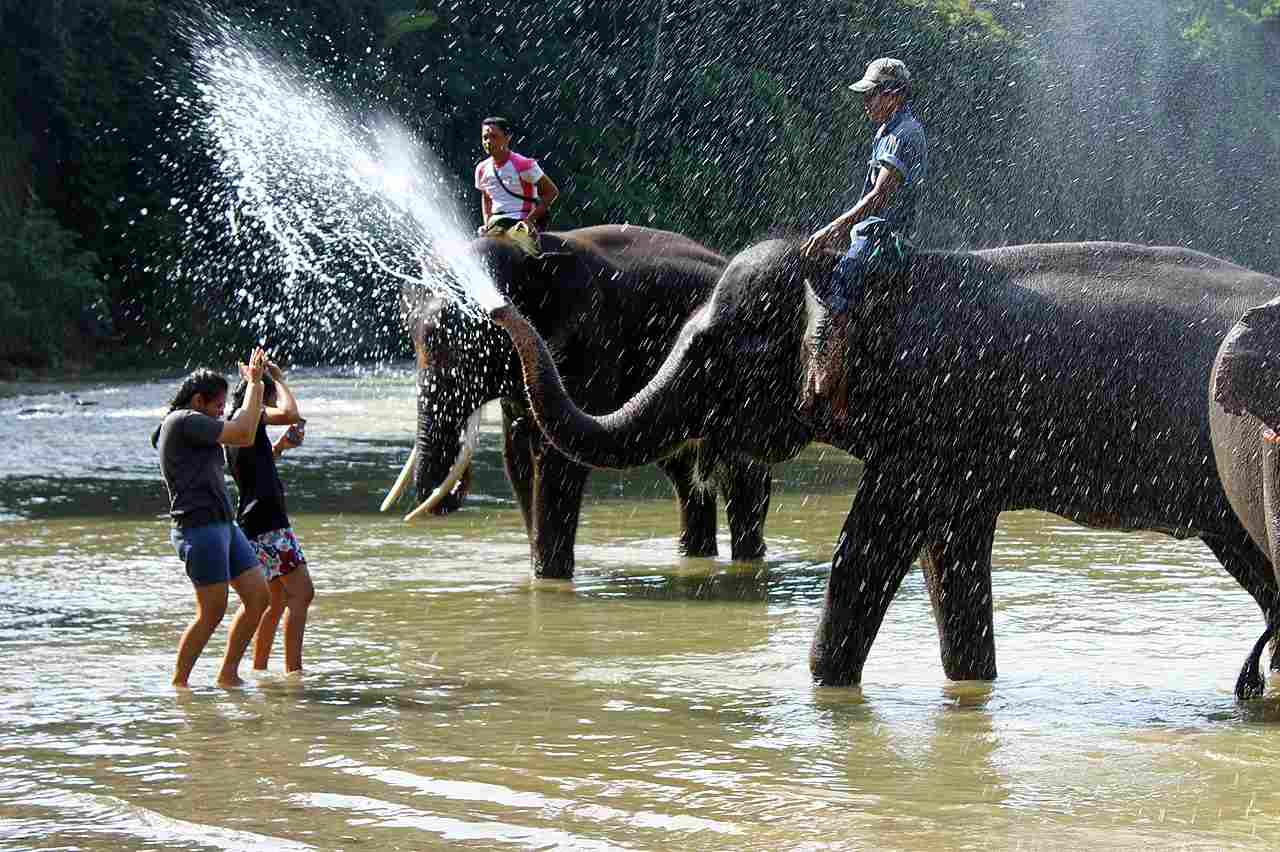
13). Conservation Status
Elephants are classified as either endangered or threatened, depending on the specific species. The main threats to their survival include habitat loss and fragmentation, poaching for ivory, and human-wildlife conflict. As human populations expand and encroach upon elephant habitats, the competition for resources increases, leading to conflicts and potential harm to both humans and elephants.
On the other hand, polar bears are listed as vulnerable by the International Union for Conservation of Nature (IUCN). The primary threat to their survival is the loss of sea ice habitat due to climate change.
As the Arctic ice melts, polar bears are losing their hunting grounds and are forced to travel longer distances in search of food. This puts additional stress on their already vulnerable populations.
In comparing the conservation status of elephants and polar bears, it is evident that both species face significant challenges. However, the specific threats they encounter differ due to their distinct habitats and ecological requirements. Efforts to protect and conserve these iconic animals involve measures such as habitat preservation, anti-poaching initiatives, and addressing climate change.
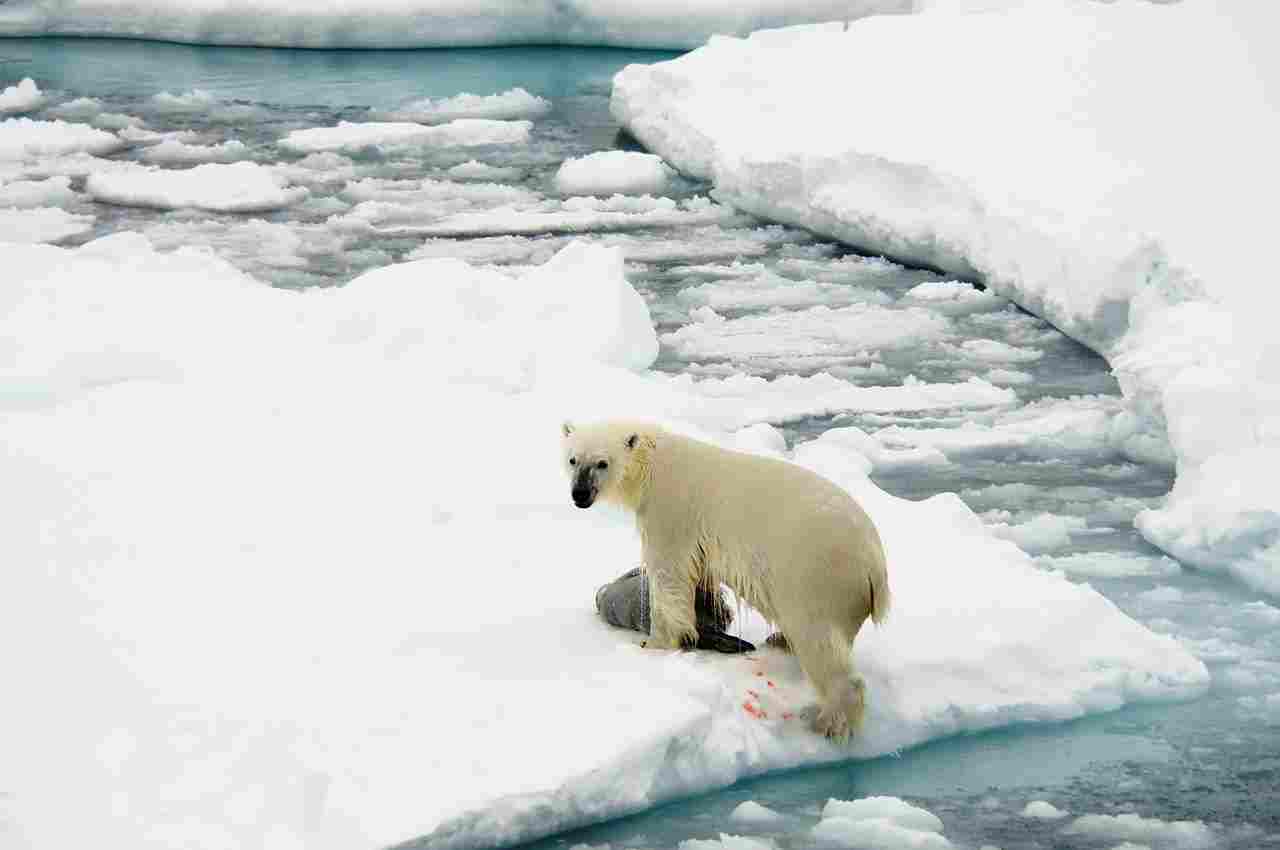
Conclusion
I). SIMILARITIES
When comparing elephants and polar bears, several similarities can be observed. Both animals are iconic and charismatic species that capture the imagination of people around the world. They are also highly adapted to their respective environments, with unique physical characteristics that enable them to thrive in their habitats. Additionally, both elephants and polar bears play important ecological roles and are considered keystone species in their ecosystems.
II). DIFFERENCES
Despite some similarities, there are significant differences between elephants and polar bears. One of the most obvious differences is their size and weight. Elephants are the largest land animals, with males weighing up to 12,000 pounds, while polar bears are the largest land carnivores, with males weighing around 1,500 pounds.
Another notable difference is their habitat. Elephants inhabit diverse ecosystems such as savannas, forests, and grasslands, while polar bears are adapted to the Arctic region and rely on sea ice for hunting and survival.

